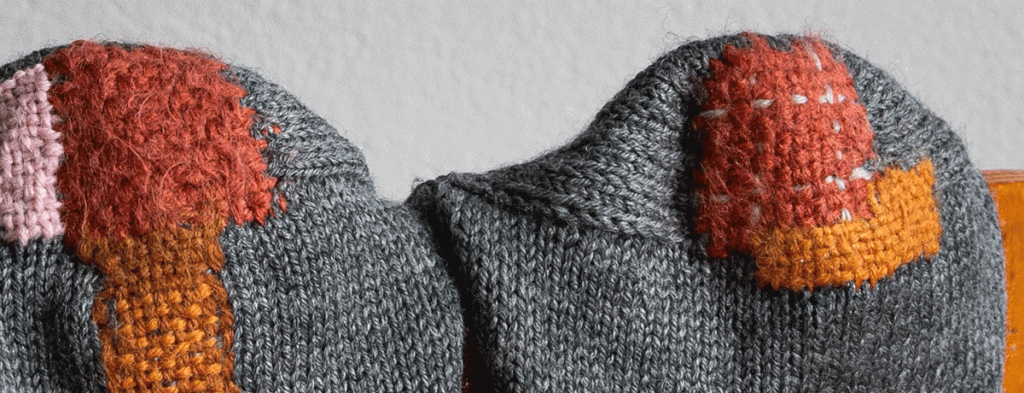
By Jeremy Williams
On the off-chance that you’re in Helsinki some time soon, you’ll be able to drop in on what sounds like a very good exhibition. FIX: Care and Repair is being held jointly across the Museum of Finnish Architecture and the Design Museum, and it celebrates the idea of repair as part of Finnish culture.
“The skills to fix and repair garments, houses and furniture have been passed down through the generations,” says co-curator Sara Martinsen. “The fact that woodwork and handicrafts are still part of our primary school curriculum has also helped a great deal to keep these skills alive.” Because they are taught these skills at school and use them at home, the press release implies that every Finnish child would be able to repair a hole in their own socks from the age of eight. Any Finnish readers can confirm to me whether that would indeed be the case.
The exhibition includes repair techniques, a collection of items that have been repaired, and it invites visitors to consider what is worth fixing and what isn’t. How does time change an object or a building? Why does age improve some things while others just deteriorate?
Visitors will also find examples of contemporary repair culture. Millions of people watch the Youtube videos by Odd Tinkering, the anonymous Finnish repair man who restores hopelessly degraded tech straight off the scrap heap. Or Minttu Wikberg, who mends woolen clothing with bright new patches, weaving the fix into the character of the garment rather than attempting to restore it to its original state. (That’s her work in the header image above.)
I won’t be able to get to the exhibition myself, but what I like about it is that it values the idea of repair. Having to mend something can feel quite negative. An item we value is broken, and that is disruptive and inconvenient. A fix now feels like an emergency intervention to make things right again. If you lack the skills to do the repair yourself, then it’s an expense and a further hassle. Maybe it’s better to just get a new one.
That changes if you have the confidence to mend things yourself. A breakage is still inconvenient, but it doesn’t make you feel helpless and at the mercy of decay. Instead, fixing things is a matter of maintenance. It allows us to care for our things and our homes, and care is a much more positive way to think about repair.
Cultures of repair are a critical component of a sustainable economy. We have to want to mend things rather than replace them. We have to see repair as normal, and not see a fixed item as second-best to a replacement. Then of course we need the capacity to fix things as well – the repair businesses and the spare parts network and the skills in the community.
We could put a more literal value on repair too. A recent study in Manchester found that the city’s residents threw away £417 million pounds worth of items that could have been fixed, with clothes the most commonly discarded category. They replaced them at a cost of £809 million. Put them together, suggests Recycle for Manchester, and that’s £1.2 billion in value that could have stayed in the city, creating jobs and saving people money.
I’ve written before about what Manchester is doing to instil a culture of repair, with its Renew Hub and the businesses it supports. Other initiatives for fostering repair include repair cafes, France’s laws on durability and repairability, and Sweden’s tax incentives for repair businesses. We’ll need more of all of this, not just to learn the basic skills involved, but to value the art of mending itself. And maybe at some point in the future, the children of Manchester too will be able to darn their own socks from the age of eight.
First published in The Earthbound Report.
Categories: Circular Economy, Consumerism, environment, fashion, Viewpoint